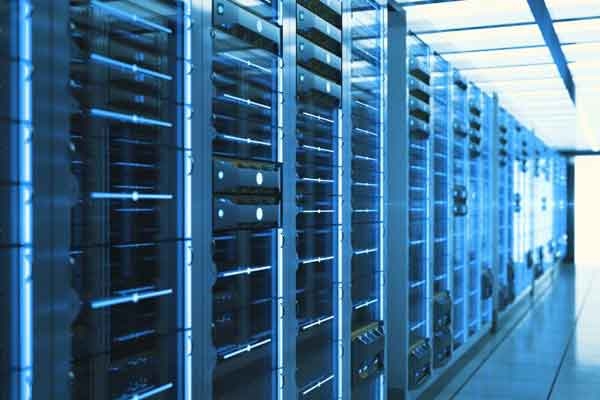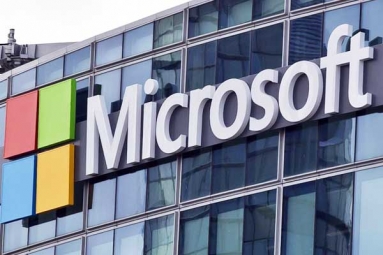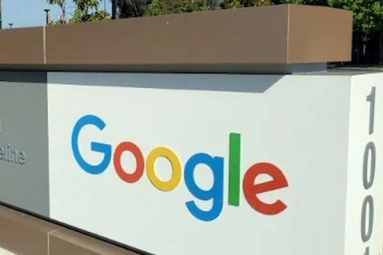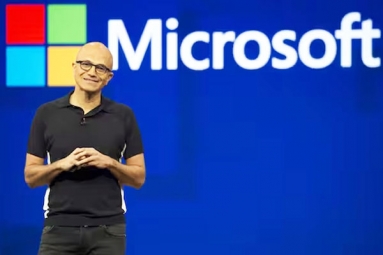Google, Microsoft, Apple and Meta's AI data centre emissions is a Record
September 16, 2024 15:28
(Image source from: Canva.com)
In recent years, major technology companies have struggled to reduce greenhouse gas emissions as energy and water consumption rose to historic levels, largely driven by demand for their AI products and services. However, new analysis from the Guardian suggests that actual emissions from Google, Microsoft, Meta and Apple data centers could be significantly higher than reported. It is estimated that actual emissions from these companies' data centers could increase by around 662 percent from 2020 to 2022 compared to official figures. Amazon, the largest greenhouse gas emitter among major technology companies, was not included in this particular analysis because its complex business model makes it difficult to isolate data center-specific emissions. What is clear, however, is that Amazon emits far more than Apple, which was the second largest emitter of greenhouse gases in 2022. Advances in artificial intelligence (AI) are increasing the energy demands of data centers and raising concerns about increased CO2 emissions.
The International Energy Agency reported that data centers will account for 1 to 1.5 percent of global electricity consumption in 2022. This figure predates the rise of artificial intelligence technology sparked by the introduction of ChatGPT. Operational AI consumes significantly more energy than traditional cloud-based applications. For example, processing a query in ChatGPT requires about 10 times the performance of a Google search. Goldman Sachs predicts data center electricity demand will increase 160 percent by 2030, while Morgan Stanley predicts global carbon dioxide emissions will reach 2.5 billion tons by the same year. There are also reports that Microsoft may be planning to build a nuclear power plant to power its largest data center. Despite these numbers, all five major tech companies claim to be carbon neutral. Google removed the label last year in response to increased scrutiny of its carbon accounting practices. Amazon recently announced that it reached its carbon neutrality goal seven years ahead of schedule by reducing its greenhouse gas emissions by 3%.
But critics say such claims are often "creative accounting practices" that raise concerns about the real impact of supposedly environmentally friendly initiatives like solar farms and electric delivery trucks. One of the central topics of this “creative accounting” concerns the use of renewable energy certificates (RECs). These certificates are purchased to prove that a company supplies renewable energy, but that the actual renewable energy is not used directly in the company's facilities. Instead, energy can be generated anywhere, even far away from a company's data center. RECs are used to calculate “market-based” emissions, which are the official numbers reported by companies. When RECs and offsets are excluded, “site-based” emissions reflect the actual emissions generated where the data is processed. This difference is significant, and if the emissions of these five companies were combined and considered as a single country, they would be the 33rd largest greenhouse gas producer in the world.
Many experts support location-based metrics as a more accurate measure of greenhouse gas emissions. The Uptime Institute claims that location-based billing provides a clearer picture of the greenhouse gas emissions associated with energy use in data centers. However, the Greenhouse Gas Protocol allows the use of RECs in official reports, which has led to a controversial debate among technology companies. The current debate largely revolves around the greenhouse gas protocols that make RECs possible. The First Emissions Partnership, led by Amazon and Meta, supports retaining RECs in emissions calculations, regardless of their geographic origin. In contrast, Google and Microsoft support a more precise approach that aims to align renewable energy production and consumption across time and space. Google's 24/7 goal is to ensure that all facilities are continuously powered by renewable energy by 2030, while Microsoft's 100/100/0 goal is to ensure that we always have access to it by the same year. Have energy that is 100% carbon-free.
Despite these goals, scientists and industry leaders have criticized the GHG Protocol's leniency toward RECs. A 2015 open letter signed by more than 50 experts argued that companies should not be allowed to report reductions in greenhouse gas emissions without a corresponding change in overall emissions. Although the GHG Protocol requires companies to report both location-based and market-based numbers, most companies cannot provide data for all three emissions categories in their annual reports. Google and Meta are the only companies that report location-based numbers directly, but only report Scope 2 emissions, which relate to the indirect emissions of purchased energy. Scope 2 emissions, which include most data center emissions, include energy purchased by companies, primarily electricity. For companies like Meta and Microsoft that provide data center information, these centers are responsible for almost all Scope 2 emissions.
In 2022, Meta reported official Scope 2 emissions from its data centers at 273 tons of carbon dioxide equivalent, but site-based calculations show a staggering increase of more than 3.8 million tons of CO2. Similarly, Microsoft reported data center emissions of 280,782 tons of carbon dioxide equivalent, rising to 6.1 million tons depending on location. These numbers indicate a large difference between reported and actual emissions. The tech giant also leases a significant portion of its data center capacity from third-party operators. According to Synergy Research Group, these companies will account for 37 percent of global data center capacity in 2022, with half of that coming from third-party contracts. Publications from these third-party data centers fall under Scope 3. This includes all indirect emissions that are not directly related to fuel or electricity consumption.
Scope 3 emissions include carbon dioxide emissions from the construction of indoor data centers and the manufacturing of equipment used in them. However, the exact quantification of these emissions is a challenge. Third-party operators can include their Scope 2 emissions in their Scope 2 reporting, or expect lessees to include those Scope 3 emissions, depending on location As of 2022, only Apple had a significant difference between official and location-based metrics. This difference is largely due to the inclusion of emissions from data centers, as Apple modified its Goal 3 methodology to include emissions from third-party services. Emissions related to data centers are expected to increase. The electricity demand of these centers is projected to double by 2030 due to the increasing energy demand of artificial intelligence. Both Google and Microsoft attribute recent growth in market issuance to AI.
Industry experts warn of power shortages in the next two years. The challenge of expanding renewable energy capacity amid disruptions to global energy systems further complicates efforts to meet growing demand. As the technology industry continues to grapple with these issues, the true environmental impact of data centers remains a major concern.

















